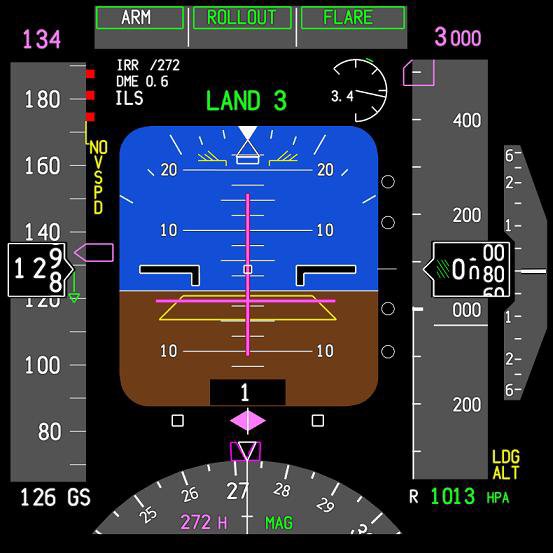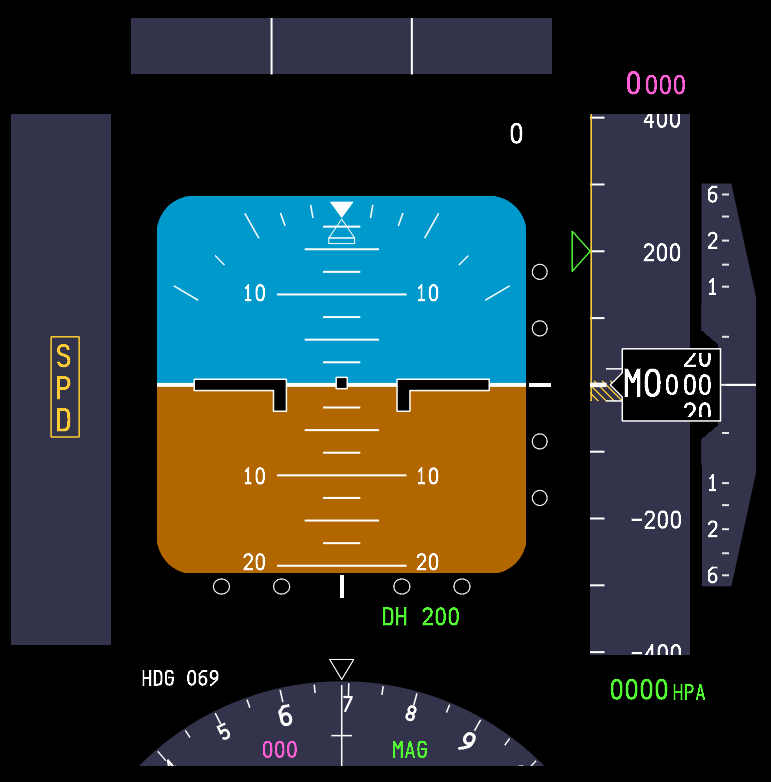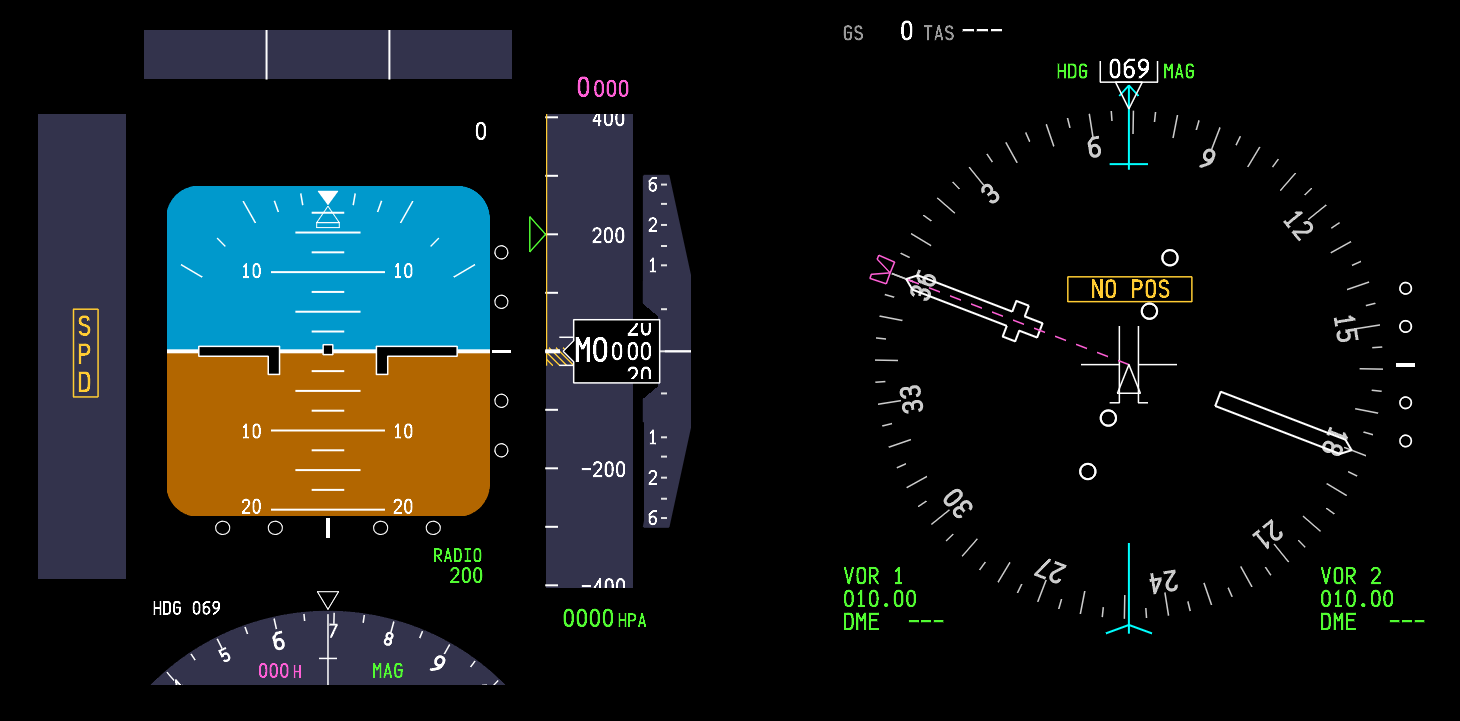I've heard it said that a "simulated flight deck is as good as the software behind the scenes" and I agree with this comment: a flight deck with poor software is a hive for frustration, disappointment and time wastage.
It's easy to write about the features and functionality of Sim-A as they are plentiful; but, I don't want to become too bogged down in minute detail, otherwise I’d be writing a manual. This review will not address in detail everything that Sim Avionics (Sim-A) software can or cannot do; if your interested in a full functionality list, it’s best to check their website, as functions are altered and improved upon on a regular basis.
Before continuing, it should be noted that there are several flight avionics suites currently available on the market. They all replicate the basic avionics functionality of the B737. However, not everything is operational with each suite and some functions behave differently between suites. Therefore, it’s a good idea to research what works and what doesn’t before your purchase.
Sim Avionics is a complete avionics solution providing the avionics software needed to build a fully functioning home cockpit; no other software is required. It has been designed to run on multiple PC's in various configurations interfacing with FS2004 (FS9) or FSX via FSUIPC and Wide Client.
Relative Newcomer
Although a newcomer to Sim-A and still learning some of the more advanced features of the software, I thought it pertinent that I make an "introductory review".
Reliability
Reliability is the most important aspect of any software. To date, Sim-A has performed as one would expect from any high-end payware software. Overall, the software is reliable, performs well, and appears to be a robust and stable platform with consistent responses.
Certainly, it seems much more stable than some of the competitors on the market (if comments on flight simulation forums are anything to go by) and is far easier to use than some other well known brands. But, it must be remembered that the software is only as good as the information inputted; therefore, if you try and do things that the aircraft & software is not designed to do, expect problems.
Further, you must bear in mind that no one computer (PC) is the same as another. Different drivers, software, flight models and hardware configuration can cause any software to behave erratically from time to time.
This said, Sim-A can on occasion produce spurious results. This is mainly associated with the more advanced auto pilot functionality and user operator errors!
I’ve documented the issues and fixes, including some user operator errors, that troubled my installation below.
Issue 1 - Trim Tab Dancing
Now and again the trim tab will become unstable as the auto pilot continually recalculates the required pitch for the aircraft at the current speed. The trim tab will “dance” causing the aircraft to pitch up and down. The trim dance (as I call it) occurs only on flights that have weather depicted, and it doesn’t occur on every flight.
FSUPIC to the Rescue
Although a little disconcerting, I believe the cause is not so much Sim-A, but the way the weather, especially aloft winds, are generated causing the elevator to continually move to counter weather differences. There is a tab within FSUPIC that stops the elevator trim from operating when the aircraft is in auto pilot mode. Since checking this FSUPIC setting (placing a tick in the box), the trim dance I was observing has decreased markedly and is now nonexistent.
Information for the auto pilot is located within the aircraft's configuration file. If auto pilot trim issues persist then some minor tweaking of the numbers maybe required. If this happens to you, then be rest assured that FDS and Sim-A staff will assist you with any minor tweaking to get you flying.
I’ve discovered that if the auto pilot does not provide consistent outputs (such as trim dancing), an easy method to often solve the issue is to switch the auto pilot command button off and then back on.
Issue 2 - V-Nav Inconsistency
Replicating the more advanced B737 auto pilot functions requires complicated algorithms. This is especially so with vertical navigation (V-Nav).
Sim-A handles V-Nav reasonably well, although you have to keep an eye on what V-Nav is doing, espeially when transitioning from level flight to descent and approach. On some flights, V-Nav honours the speed and altitude restrictions and transitioning the STAR to approach is accurate. However, at other times restrictions are not followed and the aircraft will overshoot the height and speed restriction.
V-Nav always operates correctly on take-off utilizing a Standard Instrument Departure (SID).
There is no particular reason for this - it just happens from time to time.
Understanding V-Nav and what its doing can be challenging
The challenge, I have discovered when using V-Nav is two-fold. First and foremost, you must use it within the designed capabilities of the program, and second, you must learn how and when to operate V-Nav. If you enter data that the FMS cannot assimilate, such as an altitude that is too high or too low, for the time required to reach the waypoint, then expect an overfly of the entered restrictions. This is not the fault of Sim-A. It's user error.
Sim-A, in my opinion is not alone with minor V-Nav issues; Project Magenta, Pro Sim 737 and others also have difficulties replicating this complicated algorithm. Indeed, real pilots are often confused understanding how V Nav operates and why it's doing whatever it's doing!
This is one reason why V-Nav should only be used as a guide and not as an absolute. If V-Nav, for whatever reason does not function in a method you believe to be correct, then turn it off and use the more reliable L-Nav, Level Change or Vertical Speed functions.
Issue 3 - Display Lag and Staggering
There is minimal display lag running Sim-A and FSX (using two computers).
The gauge movement of the displays is fluid and there is no pausing as information is shuttled to and from the computer and Sim-A. However, if “all waypoints” is selected to be displayed on the ND, then staggering becomes obvious on the Main Flight Display’s altitude tape, as the aircraft ascends or descends in altitude.
I’ve been told by long-term Sim-A users that this is normal as the information required to display and update the “all waypoints” is very comprehensive and can easily generate an “information bottleneck”. The solution is easy – turn off “all waypoints” when climbing, descending, or on approach. Honestly, I rarely have "all waypoints" selected and only use this function if I am searching for the nearest waypoint to make an alteration to the flight plan.
I have not experienced any display lag or staggering issues with other EFIS functions.
Issue 4 - Software Server.exe Lock-up
When you read this title, I can image the thoughts going through your mind. But, this is one of those negative aspects that has a very positive twist.
Although the software has never crashed to desktop, it has on occasion “locked up” requiring a reboot of the Sim-A server.exe. The lock up usually occurs when I have been repeatedly doing something incorrectly, such as keying into the CDU incorrect information, therefore; the lock-up caused by user error.
If this issue should occur (for whatever reason), it's only a matter of closing the server.exe using the shutdown command tab and then reopening the server.exe window. You do not need to close down Sim-A or FSX.
This brings me to the positive twist I mentioned in the earlier paragraph.
Outstanding Sim-A Feature
Of the many features Sim-A has, the ability to historically re-set the software without loosing your flight details or actual flight (in real time) is probably one of the more beneficial.
If a problem should transpire during a flight causing the server.exe display to freeze or something to stop working, you can re-set the software by closing the server.exe display and reopening it. The interruption to your flight will be seamless, providing you depress the tab “last state” within ten seconds of reopening the server.exe display window.
This is but one of several "smart" features that are often overlooked.




























































